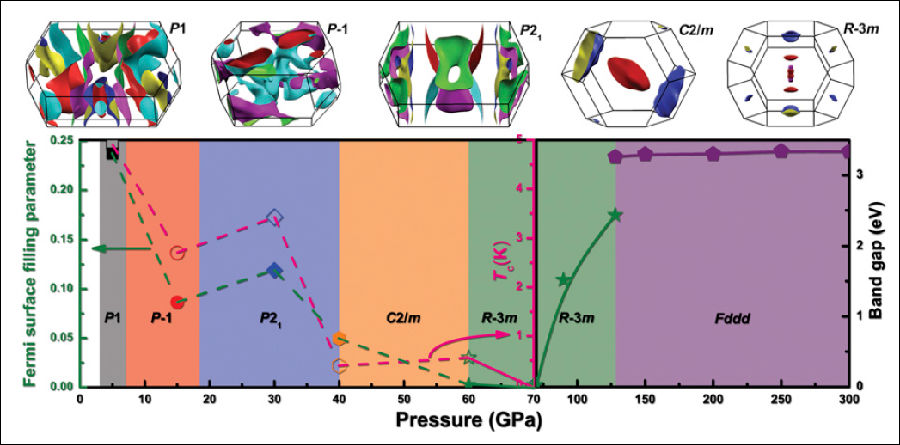From metal to insulator in dense CLi4 - Dr. Dave Mao
MARCH 1, 2016
As a contrasting counterpart, lithium compounds may share some similar unexpected behaviors compared with hydrogen dominated materials at high pressures. New work co-led by HPSTAR scientist, Dr. Dave Mao, teamed up with sciensts from Jilin University, Carnegie Institution of Washington, as well as Nanyang Normal University, found that CLi4 becomes progressively less conductive and eventually insulating upon compression based on ab initio density-functional theory calculations.
At room environment, all materials can be classified as insulators or metals or in-between semiconductors, by the capability of conducting the flow of electrons. An insulator converts to a metal under compression has been very common phenomenon. Unexpected antimetallization, ie., metal-to-insulator under high pressure is reported recently in the alkali metals (Li and Na), which are good conductors at ambient conditions transforming to insulator under high pressure. These remarkable findings were not previously thought possible.
Charge transition from 2s to 2p was proposed to account for such a behavior.
In the case of binary compound, scientists expect some similar or even more interesting discoveries. The CmLin system is proposed to be good examples for understanding of the nature of antimetalization.
In this work, the scientists wanted to probe their high-pressure behavior and exploring the possible metallization and superconductivity in CLin system.
Using ab initio density-functional (DFT) theory calculations, the scientists probed the crystal structures of lithium-rich compounds CLin up to 300 GPa. CLi4 is found to be stable at from 3 to 300 GPa among CLin system and six crystal structures are most favored in CLi4 at high pressures. Also combined with the one-particle Green’s function and the screened Coulomb interaction (GW) method, the electronic structure/energy band gap are explored in the same pressure range.
 Surprisingly, opposite to metallization happened in group-IV hydrides under pressure, lithium-rich compound CLi4, the counterpart group-IV hydrides become insulator eventually. Additionally, an unusual path with pressure showed for the phase transition from metal to semimetal, to semiconductor, and eventually to insulator. Fermi surface filling parameter is found to be a valuable parameter to quantify the evolution of the free electrons during metallization or antimetallization in metallic states.
Surprisingly, opposite to metallization happened in group-IV hydrides under pressure, lithium-rich compound CLi4, the counterpart group-IV hydrides become insulator eventually. Additionally, an unusual path with pressure showed for the phase transition from metal to semimetal, to semiconductor, and eventually to insulator. Fermi surface filling parameter is found to be a valuable parameter to quantify the evolution of the free electrons during metallization or antimetallization in metallic states.
The other co-authors in this team included Xilian Jian, Tian Cui, Huadi Zhang, Quan Zhuang, and Kuo Bao from State Key Laboratory of Superhard Materials, College of Physics, Jilin University; Xiaojia Chen from HPSTAR; Dawei Zhou from College of Physics and Electronic Engineering, Nanyang Normal University.
“Pressure-induced antimetallization in CLi4 is expected in not only pure elements but also multiple compounds, such as some alkali metal compounds”, stated in the work. “The binary compound researched here enriches the studies of antimetallization, and the fundamental nature of matter in the subject has been expanded.”
“This is another example showing that pressure is equally as important as temperature for enriching the world of materials and advancing our understanding the nature of physics”, remarked Dr. Mao, director of HPSTAR.
This work is published March 01 in PNAS Early Edition (Crossover from metal to insulator in dense lithium-rich compound CLi4).
Caption: Evolution of antimetallization properties and superconductivity in CLi4 with pressure. The evolution from metal to insulator is described quantitatively with FSFP (before 70 GPa; Left, olive green dashed line) and the electron energy band gap is shown (after 70 GPa; Right, olive green and purple solid lines), using ab initio GW calculations.
Paper in PDF
